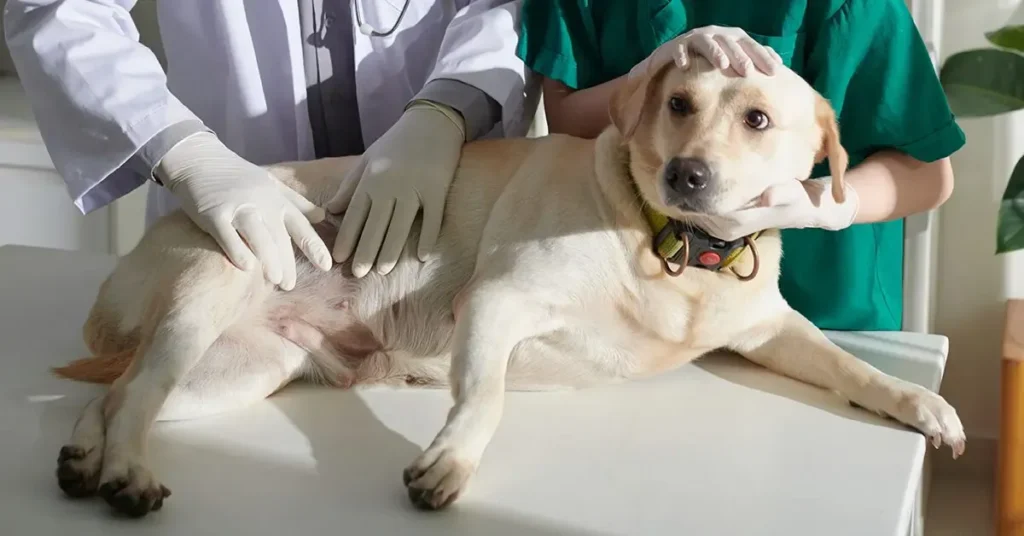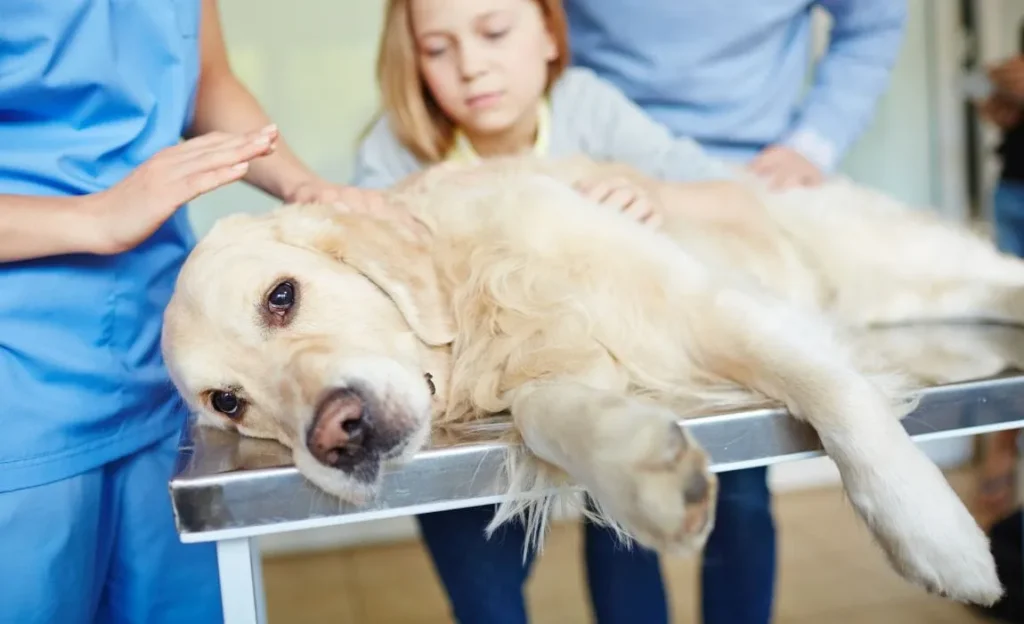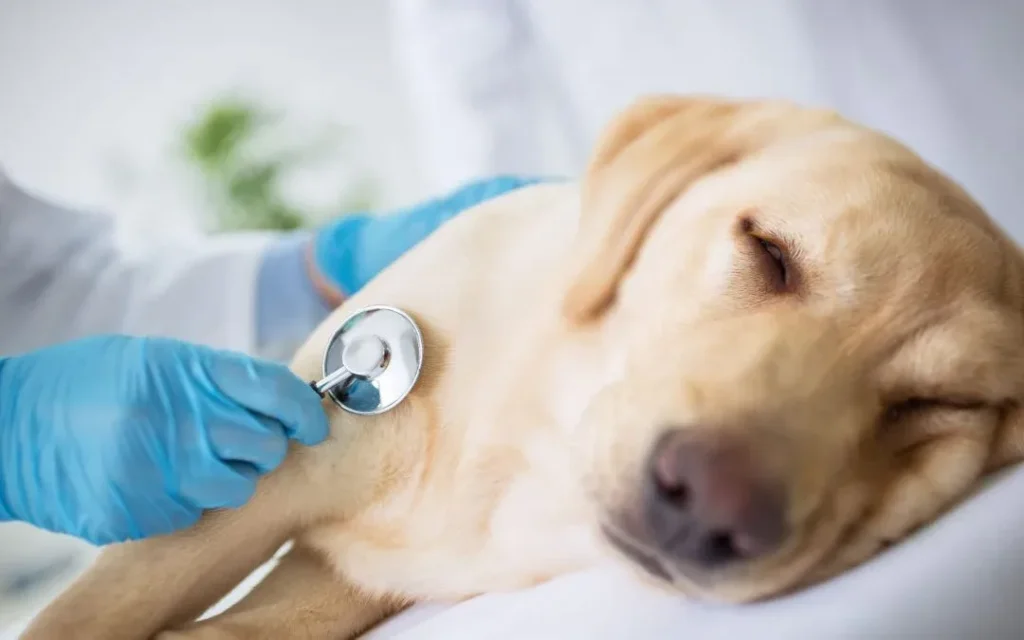Are you a dog owner concerned about bloat and want to know the signs that indicate your dog is not experiencing this serious condition? Keep reading to learn about the clear signs that suggest your dog does not have bloat.

Bloat, medically known as Gastric Dilatation-Volvulus (GDV), is a critical and potentially life-threatening condition in dogs. It’s crucial for pet owners to be vigilant and informed about signs that indicate their dog is not suffering from bloat.
Here, you’ll discover eight reassuring signs that suggest your dog is not affected by this concerning condition.
Signs Your Dog Doesn’t Have Bloat

Here are potential signs that indicate your dog doesn’t have bloat:
1. Your Dog’s Abdomen Appears Normal
One of the primary indicators of bloat, or Gastric Dilatation-Volvulus (GDV), is visible abdominal distension. If your dog’s abdomen appears normal in size and shape, without any noticeable swelling or bloating, it is a positive sign that they are not experiencing GDV.
Abdominal distension occurs when the stomach fills with gas and twists, causing it to expand significantly. In a healthy dog without bloat, the abdomen should look and feel normal, not overly tight or swollen.
2. Your Dog Have Normal Breathing Patterns
Dogs with bloat often exhibit difficulty breathing due to the pressure on their diaphragm caused by the distended stomach.
If your dog is breathing comfortably and not showing signs of respiratory distress, it suggests that they do not have bloat. Normal breathing patterns include steady, even breaths without any wheezing, panting, or labored breathing.
Comfortable breathing indicates that there is no internal pressure obstructing their respiratory function.
3. Your Dog is Not Repeatedly attempting to Vomit
Bloat is often accompanied by unproductive attempts to vomit, where the dog may retch without bringing anything up.
If your dog is not repeatedly attempting to vomit or appears to be straining without results, it is a positive sign that they are not experiencing this symptom of bloat.
Unproductive retching is a key symptom of GDV and indicates a blocked stomach, making the absence of this behavior reassuring.
4. Your Dog Has a Healthy Gum Color
Pale or discolored gums are a concerning sign associated with bloat. Check your dog’s gums for a healthy pink color.
If their gums appear normal and exhibit good capillary refill time when pressed, it suggests proper blood circulation and is reassuring regarding the absence of bloat.
Healthy gums indicate that your dog’s cardiovascular system is functioning well, which would be compromised in the case of bloat.
5. Your Dog is Active and Display Engaging Behavior
Dogs experiencing bloat may become lethargic or exhibit signs of discomfort. When your dog is active, engaged, and displaying their usual behavior, it is a positive indication that they are not currently affected by GDV.
Active and engaging behavior includes showing interest in play, being alert, and interacting normally with family members. These signs suggest that your dog is feeling well and not in distress.
6. Your Dog Portrays No Signs of Restlessness
Restlessness is a common behavioral change in dogs with bloat. If your dog is calm and not displaying signs of restlessness, such as pacing or an inability to get comfortable, it is a positive sign that they are not experiencing this characteristic symptom of bloat.
A calm dog will usually lie down comfortably, sleep soundly, and not exhibit excessive movement or agitation.
7. Your Dog Has a Normal Heart Rate
Bloat can cause an increase in heart rate as the body responds to the stress of the condition. When your dog’s heart rate is within the normal range for their breed and size, it is a positive sign that they are not currently suffering from bloat.
You can check your dog’s heart rate by feeling for the pulse inside the hind leg, where the leg meets the body. A normal heart rate indicates that the dog is not under severe stress or pain, which would elevate their heart rate.
8. Your Dog Have No Signs of Abdominal Pain
Dogs with bloat may show signs of abdominal pain, including sensitivity when their abdomen is touched. If your dog shows no signs of discomfort when you gently touch their belly and they are not exhibiting behaviors indicative of pain, it is a positive sign that they are not experiencing bloat.
A dog without abdominal pain will generally allow their belly to be touched and rubbed without reacting negatively or pulling away.
In conclusion, if you ever suspect that your dog is experiencing bloat or if they exhibit any concerning symptoms, seek immediate veterinary attention. Regular monitoring, understanding your dog’s normal behavior, and prompt action in case of any abnormalities contribute to their overall health and well-being.
Will a Dog With Bloat Still Want to Play?

In most cases, a dog with bloat (gastric dilatation-volvulus or GDV) will not want to play. Bloat is a serious and potentially life-threatening condition where the stomach fills with gas and twists on itself. It causes severe pain and discomfort for the dog.
Typically, dogs with bloat exhibit symptoms such as restlessness, pacing, drooling excessively, attempting to vomit without producing anything, and a distended abdomen.
The pain and distress caused by bloat usually make the dog reluctant to engage in normal activities like playing. Instead, they may appear anxious, and uncomfortable, and seek out places to lie down or curl up in response to their discomfort.
It’s crucial to recognize these signs promptly and seek emergency veterinary care. This is because bloat requires immediate medical attention to prevent complications such as organ damage or shock.
Will a Dog With Bloat Drink Water?
A dog with bloat may not drink water. The condition typically causes severe abdominal pain and discomfort, leading to reluctance or inability to consume anything, including water.
Dogs with bloat often exhibit signs of distress such as pacing, restlessness, attempting to vomit unsuccessfully, and a visibly swollen abdomen. The pain and pressure from the bloated stomach make drinking water unappealing and potentially painful for the dog.
Furthermore, as bloat progresses, the stomach can become distended to the point where it compresses nearby organs, making it difficult for the dog to breathe comfortably.
In severe cases, the dog may go into shock due to inadequate blood flow and oxygen delivery to vital organs. Therefore, if you suspect your dog has bloat, it’s crucial to seek immediate veterinary care. Delaying treatment can worsen the condition and decrease the chances of successful treatment.
Will a Dog With Bloat Sleep?
A dog with bloat may find it difficult to sleep comfortably due to the pain and discomfort caused by the condition. Bloat (gastric dilatation-volvulus or GDV) is a medical emergency where the stomach fills with gas and twists on itself.
This can lead to severe abdominal pain, distension, and potential complications such as organ damage or shock.
Dogs experiencing bloat typically exhibit signs of distress such as pacing, restlessness, panting, and attempting to vomit unsuccessfully. The pain and discomfort can make it challenging for them to settle down and sleep.
They may continuously change positions or seek out places where they can lie down but struggle to find a comfortable position due to the pressure and distension in their abdomen.
If your dog is showing signs of bloat, it’s crucial to seek immediate veterinary care. Treatment for bloat often involves stabilizing the dog’s condition, relieving gas buildup from the stomach, and surgically correcting the twist if necessary.
Prompt intervention is essential to improve the chances of a successful outcome and minimize the risk of serious complications associated with this condition.
Related Searches:
